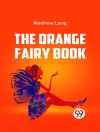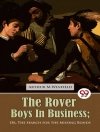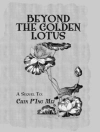In ’The Open Boat and Other Stories, ’ Stephen Crane masterfully explores the themes of human struggle and the indifference of nature through a collection of poignant narratives. The titular story, inspired by Crane’s own experience of surviving a shipwreck, exemplifies his use of Naturalism and Impressionism, showcasing his unique approach to depicting the harsh realities of life. The vivid imagery and innovative narrative techniques bring to life the existential dilemmas faced by the characters, while Crane’s economical and evocative prose captures their raw emotions and fragmented thoughts as they confront the vast, indifferent ocean. Stephen Crane, a pivotal figure in American literature, wrote during a transitional period between Realism and Modernism. His own experiences as a war correspondent and a bohemian artist in New York influenced his writing, imbuing it with a sense of urgency and a deep understanding of human vulnerability. ’The Open Boat’ emerged not only from his harrowing maritime experience but also reflects his broader philosophical inquiries into fate and the human condition, drawing from his observations of life’s unpredictability and the inherent struggles of humanity. This collection is highly recommended for readers interested in the interplay of nature and human emotion as well as those eager to delve into early American literary movements. Crane’s keen insights into mortality and resilience resonate deeply, making this book a timeless exploration of the human spirit in the face of overwhelming odds.
Om författaren
Stephen Crane (1871-1900) stands as a singular figure in American literature, renowned for his innovative narrative techniques and his vivid, often stark portrayal of the human condition. Crane’s brief yet impactful career was marked by his preoccupation with themes of nature, individualism, and societal pressures. His magnum opus, ’The Red Badge of Courage’ (1895), an introspective examination of war and courage, remains a staple in the canon of American realism. ’The Open Boat and Other Stories, ’ a collection that includes his celebrated titular novella, encapsulates Crane’s literary prowess in short fiction. The existential plight of men against an indifferent universe presented in ’The Open Boat’ reflects Crane’s own experiences of survival following a shipwreck and highlights his deft blend of naturalism and impressionism. His narratives frequently challenge traditional storytelling, incorporating irony and a keen psychological insight. Crane’s influence extends beyond his contemporaries, as he was a precursor to modernist literature, with writers such as Ernest Hemingway citing him as a significant influence. Although Crane’s life was curtailed by tuberculosis at the age of 28, his works continue to be studied and admired for their artistry and insight into the human spirit.












